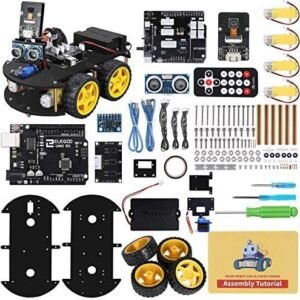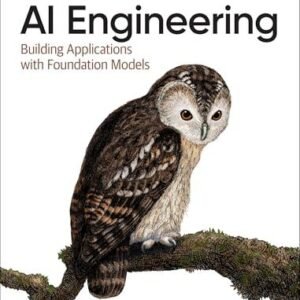In an era defined by rapid technological advancement, the landscape of education is undergoing a transformative shift. At the forefront of this revolution is artificial intelligence (AI), a powerful tool reshaping teaching methodologies and the overall learning experience. Gone are the days of one-size-fits-all education; today, AI is paving the way for personalized learning experiences that cater to the unique needs of each student. From intelligent tutoring systems and adaptive learning platforms to data-driven insights that inform instruction, AI is ushering in a new age of education that promises to enhance both teaching efficacy and student engagement. In this blog post, we will explore the myriad ways AI is influencing teaching methods, the benefits it brings to educators and learners alike, and the challenges that must be addressed to fully harness its potential in our classrooms. Join us as we delve into this exciting intersection of technology and education, and envision a future where innovative teaching powered by AI elevates the standard of learning for all.
Table of Contents
- Transforming Curriculum Design Through AI Integration
- Enhancing Personalized Learning Experiences with Intelligent Tools
- Empowering Educators: Leveraging AI for Professional Development
- Evaluating the Future: Ethical Considerations and Practical Guidelines for AI in Education
- Future Outlook
Transforming Curriculum Design Through AI Integration
As educational institutions seek ways to enhance learning experiences, the integration of AI into curriculum design emerges as a powerful tool. With its ability to analyse vast amounts of data, AI offers insights into student performance and preferences, allowing educators to create personalized learning paths. Key benefits of AI-driven curriculum design include:
- Tailored Learning Experiences: AI can adapt content to meet individual student needs, ensuring that each learner progresses at their own pace.
- Enhanced Engagement: Intelligent algorithms suggest interactive resources, fostering deeper involvement and motivation among students.
- Streamlined Assessment: Automated grading and feedback mechanisms save time and provide immediate performance insights to both students and teachers.
Moreover, the use of AI can facilitate collaborative learning environments, breaking down traditional classroom walls. By leveraging AI tools, educators can tap into globally sourced materials and peer resources to enrich their curricula. Consider the following aspects where AI can revolutionize collaboration:
| Aspect | AI Contribution |
|---|---|
| Resource Sharing | AI identifies relevant materials from various platforms tailored to class themes. |
| Network Building | AI connects learners with peers and experts worldwide, fostering greater exchange of ideas. |
| Feedback Mechanisms | AI analyzes group interactions to provide actionable insights for improving teamwork. |
Enhancing Personalized Learning Experiences with Intelligent Tools
The integration of intelligent tools into the educational landscape has opened up remarkable pathways for creating more tailored learning experiences. Artificial Intelligence (AI) systems can analyse individual learning styles, preferences, and pace, allowing educators to customize lessons that resonate with each student. By leveraging adaptive learning technologies, teachers can now provide personalized resources that not only engage learners but also challenge them appropriately based on their proficiency. This ensures that students are not left behind or unchallenged, fostering a more inclusive and effective educational environment.
Moreover, the use of data-driven insights enables real-time feedback for both students and educators, making it easier to track progress and identify areas that require attention. Intelligent tools can generate performance analytics that highlight each student’s strengths and weaknesses, allowing for targeted interventions. For instance, platforms can recommend specific exercises or content based on assessment results, thus streamlining the learning process. As these technologies evolve, the potential for a truly personalized education that meets the unique needs of every learner becomes even more attainable.
Empowering Educators: Leveraging AI for Professional Development
In the ever-evolving landscape of education, AI emerges as a transformative force that redefines professional development for educators. By harnessing data-driven insights, tools powered by artificial intelligence can identify teachers’ strengths and areas for growth, personalizing their learning experiences. This tailored approach not only enhances individual teaching capabilities but also fosters a culture of continuous improvement within educational institutions. Consider the following benefits:
- Customized Training Programs: AI can analyse teaching styles and student engagement metrics to recommend targeted professional development resources.
- Real-Time Feedback: Utilizing AI-driven platforms, educators receive instant evaluations that guide them in refining their instructional methods.
- Collaborative Learning Environments: AI creates networks for educators to connect, share insights, and collaborate on best practices, fostering a sense of community.
Moreover, AI technologies empower educators to become more adept at integrating innovative teaching practices into their classrooms. Through virtual coaching and simulated teaching environments, teachers can experiment with different strategies, receive constructive feedback, and refine their approach to diverse learners. The incorporation of AI also streamlines administrative tasks, allowing educators to focus more on what truly matters—engaging with students and enhancing the learning experience. The following table summarizes key AI tools that support educator development:
| AI Tool | Purpose | Benefits |
|---|---|---|
| AI-Powered Assessment Tools | Automated grading and feedback | Time-saving and individualized student insights |
| Virtual Coaching Platforms | Peer observation and feedback | Enhanced teaching strategies and peer support |
| Learning Analytics Software | Student performance tracking | Informed instruction and lesson adjustments |
Evaluating the Future: Ethical Considerations and Practical Guidelines for AI in Education
As we delve deeper into the integration of AI in education, it is essential to foreground the ethical considerations that come along with this technological shift. Transparency should be a core principle, ensuring that both educators and learners understand how AI systems make decisions and provide feedback. The potential for data bias is significant; therefore, safeguarding against it requires a proactive stance in data collection and algorithm design. Additionally, the importance of equity cannot be overstated—AI tools must be accessible to all students, regardless of socio-economic status, ensuring that the benefits of AI are distributed fairly.
Practical guidelines must accompany the deployment of AI in educational settings to cultivate a healthy learning environment. Key recommendations include:
- Regular Training: Educators must receive ongoing professional development to effectively utilize AI tools.
- Collaborative Design: Involve educators in the design and implementation of AI systems to align with real classroom needs.
- Student Privacy: Institute strict data governance policies to protect student information.
- Feedback Loops: Create mechanisms for feedback from users (students and teachers) to continually improve AI functionalities.
Following these guidelines will not only enhance the efficacy of AI in education but also build trust among all stakeholders, ensuring a more enriching and equitable learning experience.
Future Outlook
As we stand on the brink of a new era in education, it’s clear that artificial intelligence is not just a tool for improved efficiency; it is a catalyst for profound change in teaching methodologies. With its ability to personalize learning experiences, provide analytics-driven insights, and enhance accessibility, AI is reshaping the educational landscape in ways we are only beginning to understand.
Embracing these innovations will empower educators to become facilitators of knowledge rather than mere transmitters of information. Students will benefit from tailored learning environments that cater to their unique needs and learning styles, fostering an atmosphere of engagement and enthusiasm for discovery.
However, as we integrate AI into classrooms—whether physical or virtual—it is essential to remain vigilant about the ethical implications and potential challenges that accompany this transformation. Striking a balance between technology and human touch will be key to ensuring that education remains an enriching and inclusive experience for all.
As we continue to explore the intersection of AI and education, we invite you to join the conversation. How do you envision AI shaping the future of teaching? What opportunities—and obstacles—do you foresee in this evolution? Share your thoughts in the comments below, and let’s work together to cultivate a future where every learner thrives. Thank you for joining us on this journey to revolutionize education!





